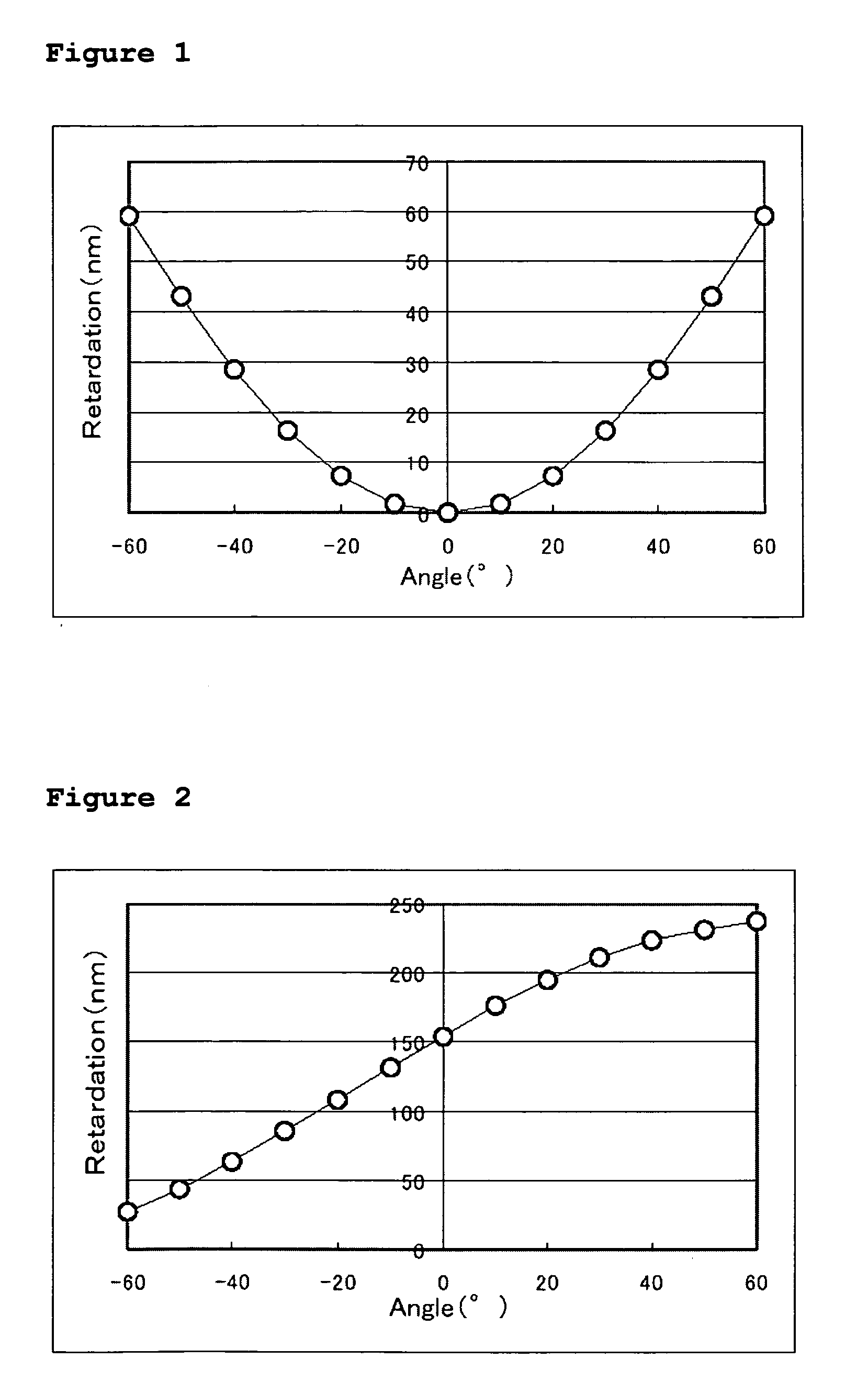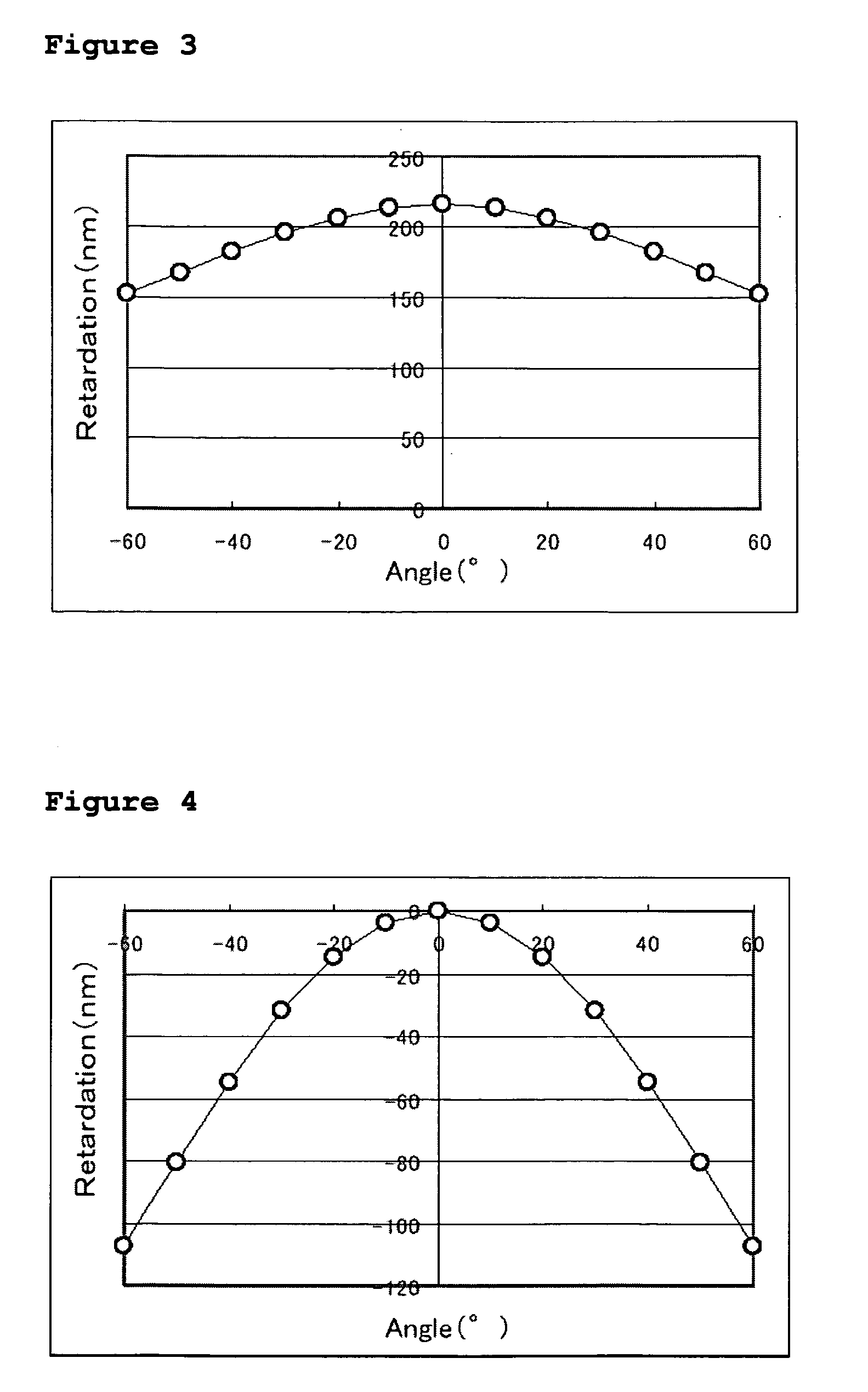Organosilicon compound-containing polymerizable liquid-crystal composition
a liquid crystal composition and organosilicon technology, applied in the direction of thin material processing, instruments, chemistry apparatus and processes, etc., can solve the problems of unsatisfactory uniformity and stability of homeotropic alignment, and achieve excellent adhesion to supporting substrates, good adhesion, and uniform alignment
- Summary
- Abstract
- Description
- Claims
- Application Information
AI Technical Summary
Benefits of technology
Problems solved by technology
Method used
Image
Examples
example 1
[0177]
[0178] To the above-mentioned composition MIX1, added were a polymerization initiator Irgacure 907 in a ratio by weight of 0.03 to the composition and compound (3-1) in a ratio by weight of 0.06 thereto. Toluene was added to the composition to prepare a 75 wt. % solution in toluene.
example 2
[0179] The polymerizable liquid-crystal composition obtained in Example 1 was applied onto a saponified TAC film not subjected to surface treatment such as rubbing, according to a spin-coating method, and heated at 60° C. for 3 minutes to remove the solvent. Then, this was polymerized through exposure to UV rays in a nitrogen flow to obtain an optical film having uniform homeotropic alignment. The retardation of the optical film was determined while it was inclined from the vertical direction to the film face, and the result is given in FIG. 1. The evaluation in the peeling test of the film was “excellent”, and the adhesiveness of the film to the supporting substrate, saponified TAC film was good.
example 3
[0180] A polymerizable liquid-crystal composition was prepared in the same manner as in Example 1, except that the amount of compound (3-1) added thereto was 0.1 in terms of the ratio by weight of the compound to MIX1. Using the thus-obtained polymerizable liquid-crystal composition, an optical film having uniform homeotropic alignment was obtained in the same manner as in Example 2. The tilt angle dependency of the retardation of the optical film was the same as in Example 2. The evaluation in the peeling test of the film was “excellent”, and the adhesiveness of the film to the saponified TAC film was good.
PUM
| Property | Measurement | Unit |
|---|---|---|
| Weight | aaaaa | aaaaa |
| Composition | aaaaa | aaaaa |
| Polarity | aaaaa | aaaaa |
Abstract
Description
Claims
Application Information
 Login to View More
Login to View More - R&D
- Intellectual Property
- Life Sciences
- Materials
- Tech Scout
- Unparalleled Data Quality
- Higher Quality Content
- 60% Fewer Hallucinations
Browse by: Latest US Patents, China's latest patents, Technical Efficacy Thesaurus, Application Domain, Technology Topic, Popular Technical Reports.
© 2025 PatSnap. All rights reserved.Legal|Privacy policy|Modern Slavery Act Transparency Statement|Sitemap|About US| Contact US: help@patsnap.com



